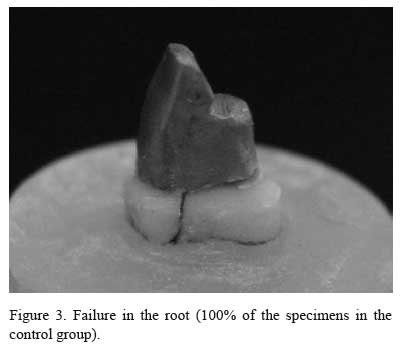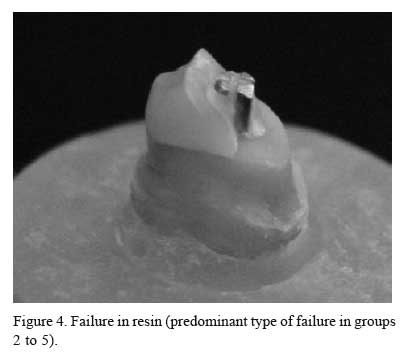The aim of this study was to compare the resistance of endodontically treated teeth with intraradicular retainer different amounts of remaining coronal structure. Fifty freshly extracted maxillary canines were endodontically treated and randomly assigned to five groups (n=10), as follows: group 1 (control) = teeth with custom cast post and core; group 2 = teeth without remaining coronal structure; group 3, 4 and 5 = teeth with 1 mm, 2 mm and 3 mm of remaining coronal structure, respectively. All specimens in groups 2 to 5 were restored with prefabricated post and resin core. The teeth were embedded in acrylic resin and the fracture strength was measured on a universal testing machine at 45 degrees to the long axis of the tooth until failure. Data were analyzed statistically by one-way analysis of variance and Tukey's test. There was no significant differences (p>0.05) between the control group and group 2, and between groups 3, 4 and 5 (p>0.05). Control group and group 2 had significantly higher resistance strength than groups 3, 4 and 5 (p<0.00001). The findings of this study showed that teeth without remaining coronal structure had significantly higher fracture strength than those with remaining coronal structure (1 mm, 2 mm and 3 mm). When the dental crown was not completely removed, the amount of remaining coronal dentin did not significantly affect the fracture strength of endodontically treated teeth with intraradicular retainer.
posts and core technique; fracture strength; composite resins






